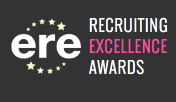 Well, I and my team are still so excited to have won large company Talent Acquisition Department of the Year, and now it is time to start sharing what got us there.
Well, I and my team are still so excited to have won large company Talent Acquisition Department of the Year, and now it is time to start sharing what got us there.
First a little bit of background: I joined Spectrum Health in September of 2013, with the mission to take a good team and make it great.
I’ve spent my career building talent-acquisition departments, but Spectrum Health presented many unique opportunities. It is an integrated health system, meaning we have a delivery system comprised of our hospital group, as well as ambulatory centers, specialized practices, and physician offices under our medical group, and an insurance company. Although we are “integrated,” each business unit has its own unique history, needs, and leadership that needs to be taken into account. Additionally, healthcare, as an industry, is not celebrated for having a rapid change mentality. Finally, our business centers on care, and the business/financial acumen I was used to in my prior roles was not as ingrained in the organization. That being said, it is a wonderful organization, and the team I stepped in to lead was competent, dedicated, and hard working.
Within my first week, we did a Kaizen event, so that I could best understand the current state of recruiting in the quickest possible manner. This also allowed me quickly to get a tremendous amount of input from the current team and internal customers, and craft a desired future state, and begin the process of selling that to my team and the organization. What I realized very early on was that the future state was going to look very different from the current state, and that responsibilities and accountabilities within the process were going to need to shift dramatically if we were going to be effective in our mission to increase quality and volume of hires, while at the same time reducing time and cost.
One of the changes we needed to drive was to reduce requisition load to manageable levels for my recruiters. A third of my staff were coordinators, responsible for onboarding new hires and scheduling hiring team interviews. They were all highly skilled, smart individuals, who were somehow relegated to administrative roles that were not very fulfilling for them and did not prepare them to move up into the recruiting organization. I’m a big fan of simple solutions, and always try to follow Occam’s Razor first, knowing that almost always the simple solution is the correct solution. Thus, I made a calculated decision to make my coordinators recruiters. This had some immediate ramifications: first, it would more evenly distribute the req load. Second, it would also mean that each recruiter could onboard their own candidates, due to the decreased load. Finally, it would require pushing the responsibility for scheduling hiring team interviews to the hiring manager.
As I’m sure you can imagine, the first two items were fairly easy to sell and implement, but the third, well that was going to require a little work, as very few organizations would ever consider pushing that work onto their hiring managers, nor would most hiring managers ever dream of a world were “HR” did not do that work for them.
The crux of the solution on this one is something that I feel we in talent acquisition often lose sight of: we (talent acquisition and hiring managers) are on the same team. We all value quality and speed. Remember, an opening creates tremendous stress on the hiring manager. They often are picking up the extra work created by the vacuum, so finding the right person, and fast, is very important to them. All I needed to do was show how taking over scheduling their own interviews would lead to that.
Once again, it’s about the simple solution. Our new structure did reduce req load, we wanted to keep our recruiters at between 20 and 25 reqs apiece. There is simple math behind this. One does not need to be Good Will Hunting to figure out how many hours it takes to fill a position on average, how many reqs a recruiter carries, and how many hours a week they can then put forth against each requisition. Within those hours some things are more valuable than others, such as sourcing, assessing, and closing. Scheduling has a horrible ROI. It can take an inordinate amount of time “herding cats” to get one interview scheduled. This is time that could be better spent on the high-value activities. Each recruiter had multiple reqs, while each hiring manager usually had only one or two reqs to manage. Additionally, the hiring managers had the ability to see items on their teams calendars and work with their teams to align times much easier than we did.
At first, of course, there was outrage that we were taking away a service we always provided. That is perfectly understandable. However, once we showed where we felt the value would be realized and how this would help them realize their goals quicker, the outrage began to fade. The initial “ask” was to try it and give us feedback. I’m certainly not perfect, and if this didn’t play out as expected, then we’d fix it, fast. I’ve never been afraid to fail, but that fear is easy to manage when you have a plan to fail fast and fix faster.
I’m happy to report that this process was quickly adopted and is now part of our standard work. Although this has been going on for over a year now, it feels like we’ve never done it any other way!
Next time I’ll walk through how we went from a respectable close rate on offers to a stellar 99.54 percent offer acceptance rate overnight.